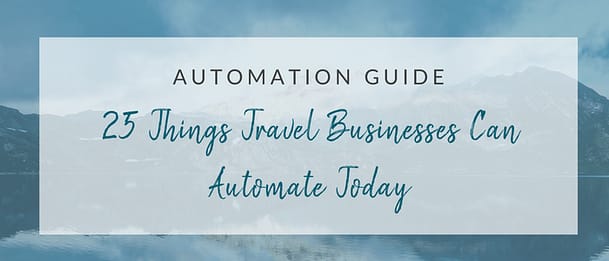Travel SEO – Tourism’s Best Marketing Strategy
If you are like us, you’ve subscribed to way too many marketing businesses, and you hear about social media, email funnels, Facebook ads AND SEO…and it can get overwhelming!
Here’s our advice to you: Use what works for your business but also work on levelling up your SEO.
Although not new, the way SEO works is ever-evolving. SEO for tourism websites is a critical element of your digital marketing strategy.
So let’s get into why travel SEO is adventure tourism’s best marketing strategy, effective ways you can implement it and what are the next steps you should be taking.
The data is telling us that SEO is worth doing
Did you know…
- There are on average 5.4 billion Google searches per day
- While only 500 million accounts use Instagram every day
- There are 3.9 billion active email users
- Almost 1.88 billion daily active users on Facebook
Is SEO really worth doing?
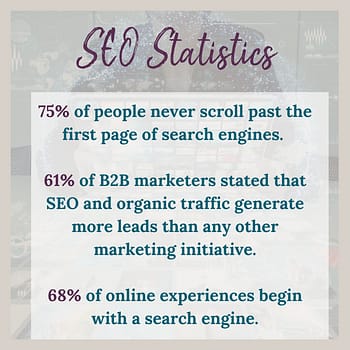
Absolutely! When you begin to look at your numbers and analytics, organic reach is an important one. Even though there are so many other marketing channels out there, it really is worth spending the time and research to get your SEO as good as it can be.
An Alexa report shows 54.9% of all traffic for Travel and Tourism websites comes from ‘Search’. Another 41.8% comes from direct and referral traffic, bringing the total traffic from SEO, or inbound marketing, for most tourism businesses, to well over 80%.
Social Media you ask? Adds up to about 2.2% in total which we know can depend vastly on the brand and business ~ but we hope that statistic helps put things into perspective of where your time could be better spent!
How do you know if SEO is worth it for YOUR business?
Easy-open your Google Analytics and find out which source provides your website with the most traffic. If it’s organic search and direct, it’s important to keep that! SEO will help you not just keep that traffic but GROW those numbers. If your biggest source of traffic is something else, we recommend you keep doing that and watch that this traffic is ACTUALLY converting into sales.
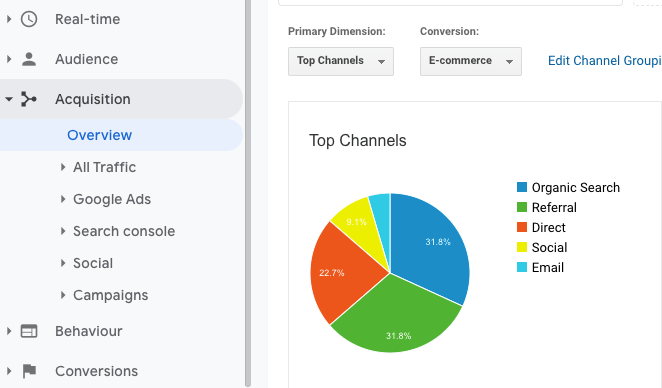
Why is Google winning?
Comparing Facebook to Google, we quickly see that Google receives 3 times more traffic on average, so as a place for people to discover you, Google wins. Google helps people FIND you while email and social platforms help keep your audience ENGAGED.
Where would we spend our time and money?
- SEO.
- Sending emails.
- Social platforms.
After doing a deep dive into our analytics we know that Instagram drives hardly any traffic to our website and none of our existing clients or leads came through social media. But it’s important to maintain an online presence so we keep it up to date but try not to spend too much time on it.
In the travel industry, we need to get ourselves in front of people at all stages of the buying process. If travellers are dreaming of a vacation and Google a destination, you want to be front and centre if your business operates there. When people are comparing tour companies or travel agencies to help them go to the destination, you want to show up there too. Once they FIND YOU, you want to capture their email and get them to follow on social so you can keep engaging with them. Sending emails to your audience lets you connect with them, be relatable and gives you a more direct path to promote and advertise.
What can you do to get ahead of the SEO surge?
SEO is not as easy as everyone makes it seem but there is a formula and you CAN do it if you sit down and learn by doing the research beforehand. Let’s look at things you can begin with…
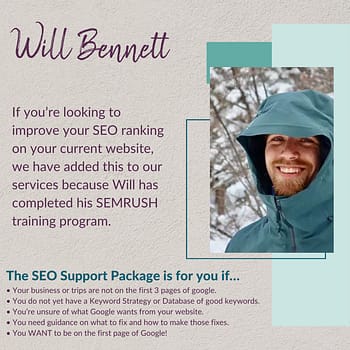
* Pssst, we recently found this amazing checklist so we definitely recommend you check it out here.
Keyword Research for Tour Operators
What are people typing into Google when they might be looking for your adventures? Put yourself into the client’s shoes and write a list of all the possible search terms. Then head over to Ubersuggest, Google trends or Search Console for some free keyword searching. You want the volume over 50 (more ideally) and a KD (keyword difficulty) score of less than 35. It’s important to get out of your own head and into your potential traveller’s mind – they are not industry experts like you are!
Time to go incognito
A handy trick that we use is: opening an incognito window (so you don’t get results skewed by what Google already knows about you) and start typing in terms from your list into the search bar. As you type, look at the ‘auto-suggest’ results that pop up, make note of any relevant terms and add them to your list.
Log into your Google Search Console
It’s time to check what words you are already ranking for on your website. Hopefully, you see some from the list you have previously made. This can help give a clear focus and direction that you should start to channel in on. You can begin to add the best keywords/phrases to your titles and build from there.
Choosing the right keywords for your tourism niche

More often than not adventure/tourism business owners find SEO and keyword research overwhelming and therefore it often gets overlooked. A common misconception is that you have to rank for SUPER popular keywords like ‘Hiking Tour Canada ‘. This is too vague and won’t help you or your audience. It’s important to take a step back and think about who your ideal customer is and what they will want. This will save you time, money and energy!
Did you know? People do search for those super generic terms, and HUGE tour companies pay top dollar to bid on them with Google Pay Per Click ads? Let them, it isn’t necessary for your business until you have thousands for ad spend!
SEO and Content Creation
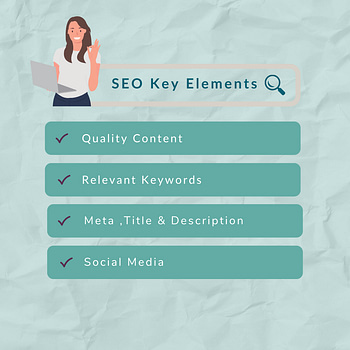
It’s time to get writing and creating. By this point, you should have some high-value keywords and a plan of action.
The goal here is to tell Google that you are an authority in your tourism niche. We recommend you create several blog posts all based on the words and topics you want to rank for. Aim for 1500+ words per post and include images, videos and maps if applicable.
Those articles should be like spokes on a wheel, all pointing back, with links, to your booking page. What you’re actually doing here is using your content pages to lift up your booking pages.
This is the basis of good SEO.
Why are H1/H2/H3 tags so important for SEO purposes?
Now you have all your keywords, it’s important to add them to your titles and headings throughout your website and blog posts. It’s important to focus on these as they make a big difference, more than you might realize! When we help small businesses, we see a lot of the same mistakes – people use these heading as FORMATTING (like in word) but that’s not what they are for! Here’s what the H (heading) is used for;
- H1 – a tag that helps google bots understand the TOPIC of the page
- H2 – tags that improve USER EXPERIENCE and help further define the topic
- H3 – tags improve ACCESSIBILITY
John Mueller who is the Senior Webmaster Trends Analyst at Google said that “H1/H2/H3 tags help Google to understand the structure of a page. So if you’re using H1s as Google recommends for your page title or content heading, your H1 is effectively telling Google “here is what my page is about.”
Here’s a great SEMRUSH article all about heading tags to help you learn more.
On-Page SEO and ‘SEO Audits’ for Travel Websites
It can be helpful to work with someone to help give you an overview and mini-audit to make sure page titles and URLs for your main ‘tours’ or ‘booking’ pages contain your target keywords. It’s vital to include your keywords throughout your page copy but not keyword-stuff your pages.
Photo or video-only pages might look stunning, but do little to help your rankings. All important pages, including your homepage, should have at least 400-500 words of copy minimum. If your site is WordPress, use the Yoast plug-in to optimize your page titles and descriptions to improve your click-through rate (CTR) from Google search results.
Peak Flow OBM Case Study
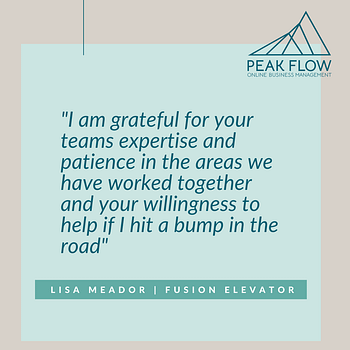
Peak Flow OBM has a client with a small paddling business and her website was only showing up on the second or deeper pages of Google. Dun dun dun… Ok, we are just kidding while this is by no means terrible, it’s not great either – because let’s be honest, when you run a search, how many pages do you actually look through?
We audited her site, created a keyword plan, updated the on-page SEO for her whole website, and now there are 19 pages ranking on the first page for relevant keyword searches! What this means is that when someone enters a keyword search like “SUP lessons Victoria BC” she’s front and centre. Woop!
Another important element for this client was her local SEO. Since she is primarily based at a physical location, she had to ensure her Google My Business listing, Google map pin location and Google Reviews were all accurate to further support the Google bot’s understanding of her business. More about local SEO here.
Where should I start?
- Start by updating your top 3 website pages (pages with most traffic).
- Audit your site and find out what’s making Google unhappy and fix those issues. Yoast can help with this or ask us about generating you a report using SEMRUSH.
- Add Yoast SEO plug into your WordPress site and turn on green lights for all pages and blog posts!
SEO Services are Here to Help!
We have covered quite a few main points and things you can put into action immediately in this post. But we get that it sounds like a lot. If you begin to do these things, you should start to see your Google rankings increase over the next few months. It can then take another few months to really drive high-quality traffic to your site (especially if you’re updating through the off-season!). SEO is not ‘set it and forget it’. It takes constant effort to earn and keep those results.
If you need any help in creating an effective SEO program, contact us and we can help you get an SEO strategy in place!
Join the Conversation
We would love for you to join our Business of Adventure Facebook group. This is a collaborative space for business owners or freelancers in the adventure travel and tourism space. The focus here is to share best practices and tips about online presence and digital marketing (front end) and online systems (backend) so you can establish a rock-solid foundation for your adventure business. If this is something you could benefit from, please join!
Fun Fact: Peak Flow OBM is a Certified SEMRUSH Agency Partner!
This means we have completed all the training in the Semrush Academy, passed the exams and are expected to do ongoing professional learning. Through us, you get access to this industry-leading software that can do it all including ongoing reporting so you can monitor trends and changes over time for true transparency!

